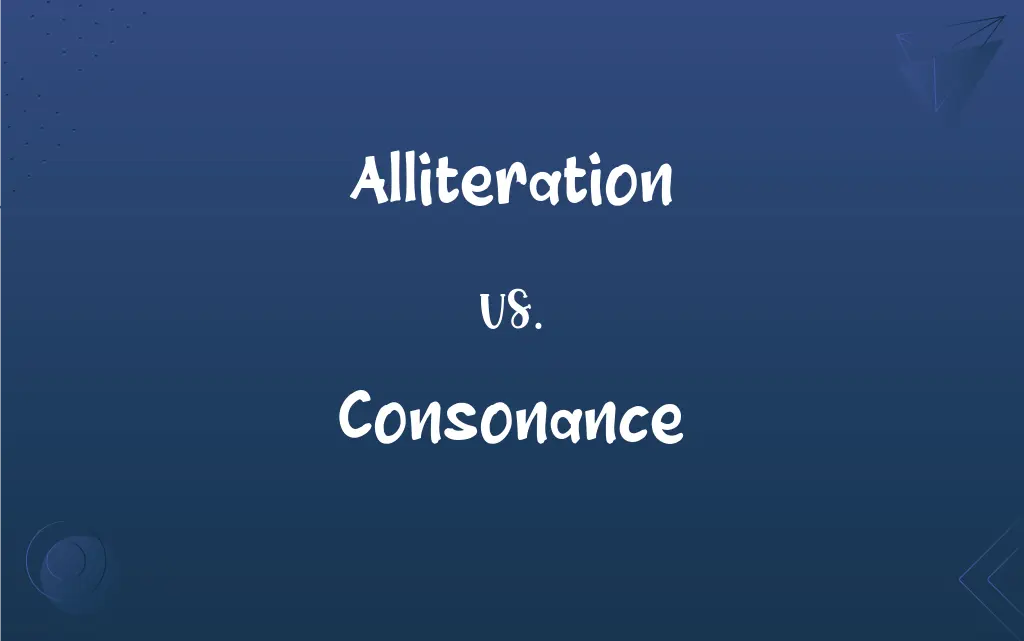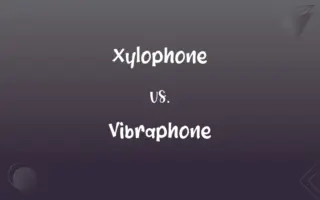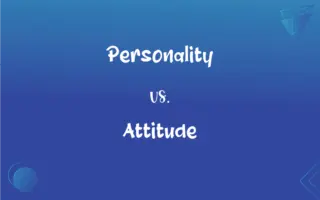Alliteration vs. Consonance: What's the Difference?
Edited by Janet White || By Harlon Moss || Published on January 31, 2024
Alliteration is repetition of the same initial consonant sounds in a series of words. Consonance is repetition of consonant sounds in close proximity, not limited to the initial letters.

Key Differences
Alliteration involves the repetition of the same consonant sound at the beginning of words in close succession. Consonance, while similar, refers to the repetition of consonant sounds, which can occur at any position in the word, not just the beginning.
Alliteration is often used in poetry and prose for its rhythmic and aesthetic qualities, focusing on the sound of the beginning letters in words. Consonance also serves a rhythmic purpose but is more flexible, involving the repetition of consonant sounds in the middle or at the end of words.
Examples of alliteration include phrases like "Peter Piper picked a peck of pickled peppers," where the 'p' sound is repeated at the start. In consonance, an example could be "the ship has sailed to the far off shores," where the 's' sound is repeated within and at the end of words.
Alliteration tends to create a more noticeable pattern due to the repetition of sounds at the beginning of words, making it a popular stylistic device in tongue twisters and branding. Consonance can be more subtle, contributing to the texture and rhythm of the text without being as overt.
Both alliteration and consonance are used to create a musical quality in language, enhancing the reader’s or listener’s experience. Alliteration is often used for emphasis or to convey a certain mood, whereas consonance is frequently employed to create a sense of harmony and unity in the text.
ADVERTISEMENT
Comparison Chart
Sound Position
Beginning of words
Any part of the word
Focus
Initial consonant sounds
Any consonant sound
Common Usage
Poetry, branding, tongue twisters
Poetry, prose to create rhythm
Effect on Language
Creates noticeable patterns and emphasis
Provides subtle texture and harmony
Example
“She sells sea-shells by the sea-shore”
“The lumpy bumpy road was rugged and rough”
ADVERTISEMENT
Alliteration and Consonance Definitions
Alliteration
Stylistic device where words start with the same sound in close succession.
Big bad bears behave badly.
Consonance
Repetition of consonant sounds within or at the end of words in a phrase.
The ship has sailed to the far off shores.
Alliteration
Repetition of initial consonant sounds in adjacent words.
Sally sells seashells by the seashore.
Consonance
Use of repeating sounds made by consonants in a sentence or phrase.
The rapid rapping resonated room to room.
Alliteration
Use of the same consonant at the start of each word in a sentence.
Wild winds whipped westward.
Consonance
Similar consonant sounds repeated in closely placed words.
Littered letters lay lazily on the lawn.
Alliteration
Repetitive sound at the beginning of words in a phrase.
Furious flames flickered ferociously.
Consonance
Literary device where consonant sounds recur in close proximity.
He struck a streak of bad luck.
Alliteration
Literary technique of repeating consonant sounds at the beginning of words.
Peter Piper picked a peck of pickled peppers.
Consonance
Repetition of consonants in nearby words, not limited to the first letter.
The pitter-patter of tiny feet.
Alliteration
The repetition of identical or similar sounds at the beginning of words or in stressed syllables, as in "on scrolls of silver snowy sentences" (Hart Crane). Modern alliteration is predominantly consonantal; certain literary traditions, such as Old English verse, also alliterate using vowel sounds.
Consonance
Agreement; harmony; accord.
Alliteration
The repetition of consonant sounds at the beginning of two or more words immediately succeeding each other, or at short intervals.
Consonance
Close correspondence of sounds.
Alliteration
The recurrence of the same letter in accented parts of words, as in Anglo-Saxon alliterative meter.
Alliteration
The repetition of the same letter at the beginning of two or more words immediately succeeding each other, or at short intervals; as in the following lines: -
Behemoth, biggest born of earth, upheavedHis vastness.
Fly o'er waste fens and windy fields.
In a somer seson whan soft was the sonne,I shope me in shroudes as I a shepe were.
Alliteration
Use of the same consonant at the beginning of each stressed syllable in a line of verse;
Around the rock the ragged rascal ran
FAQs
Can alliteration occur in the middle of words?
No, alliteration specifically refers to the repetition of sounds at the beginning of words.
Is consonance limited to the beginning of words?
No, consonance can occur at any position within words, not just the beginning.
How is alliteration used in literature?
Alliteration is used in literature to create rhythm, enhance mood, and emphasize certain words or themes.
Can alliteration include vowel sounds?
Technically no, alliteration is typically concerned with consonant sounds, though some consider vowel sounds as alliterative.
What is alliteration?
Alliteration is the repetition of the same consonant sound at the start of closely placed words.
Can alliteration aid in memorization?
Yes, the repetitive nature of alliteration can make phrases easier to remember.
What is consonance?
Consonance is the repetition of consonant sounds within or at the end of words in close proximity.
Can consonance be found in everyday language?
Yes, consonance is often found in common phrases, poetry, and prose.
Can alliteration be used in branding?
Yes, alliteration is frequently used in branding and marketing for its catchy and memorable qualities.
Does consonance contribute to rhyme?
Yes, consonance can contribute to rhyming patterns, especially with internal and end rhymes.
Are alliteration and consonance only used in poetry?
No, they are used in various forms of writing, including prose, advertising, and popular media.
Is consonance effective in speech writing?
Absolutely, consonance can add rhythm and flair to speeches, making them more engaging.
Can consonance be subtle in text?
Yes, consonance can be quite subtle, contributing to the text's rhythm and flow without being overtly noticeable.
Can consonance be used in non-fiction writing?
Yes, consonance can be used in non-fiction to add emphasis or stylistic flair to the writing.
How does consonance affect the tone of a text?
Consonance can affect the tone by adding a lyrical or musical quality, enhancing the overall mood.
Does consonance always involve repetition of the same consonant?
Yes, it involves the repetition of the same consonant sound, but not necessarily the same letter.
What is the main purpose of using alliteration and consonance?
The main purpose is to add a rhythmic, musical quality to language, enhancing its aesthetic and emotive appeal.
What is an example of alliteration in a famous work?
"The fair breeze blew, the white foam flew" from "The Rime of the Ancient Mariner" by Samuel Taylor Coleridge.
How is alliteration different from assonance?
Alliteration is the repetition of consonant sounds at the beginning of words, while assonance is the repetition of vowel sounds within words.
Are there specific rules for using alliteration?
While there are no strict rules, effective alliteration typically involves the repetition of sounds in a way that enhances the text's aesthetic.
About Author
Written by
Harlon MossHarlon is a seasoned quality moderator and accomplished content writer for Difference Wiki. An alumnus of the prestigious University of California, he earned his degree in Computer Science. Leveraging his academic background, Harlon brings a meticulous and informed perspective to his work, ensuring content accuracy and excellence.
Edited by
Janet WhiteJanet White has been an esteemed writer and blogger for Difference Wiki. Holding a Master's degree in Science and Medical Journalism from the prestigious Boston University, she has consistently demonstrated her expertise and passion for her field. When she's not immersed in her work, Janet relishes her time exercising, delving into a good book, and cherishing moments with friends and family.































































